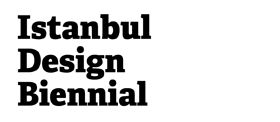
Here is Boğaçhan Dündaralp’s text for the 7th issue of the New City Reader [Ecology]:
In the last 10 years, perhaps similar to many other cities in the grip of global capitalism and neoliberal policies, Istanbul is a part of a process through which urban landscape is transformed and reproduced. This process redefines and shapes urban segments in social and ecological, not just in physical, terms. It is a context defined by the mechanisms of social segregation and exclusion; a context, which threatens public spaces by prioritizing private property, consumption and authoritarian urban design. Moreover, going beyond intimidation, the process transforms public spaces into private property by using mechanisms such as TOKİ, and destroys the natural resources of the city. In this context that became a source of social and ecological crises, “design” is used as a tool that ignores the realities of the “place”, legitimizes the prevalent through intense aestheticisation and refunctionalization; and the “designer” is used in a passive and reconciliatory role that encourages creativity along these lines.
Without a doubt, the most striking result for a city in which the rights to be an urban resident is violated, a city which is turning into isolated, consumption-oriented, artificial and homogenized landscape fragments, is the gradual annihilation of the possibilities for an alternative urban life and emancipation. Just like the natural resources of the city, multi-layered and productive urban landscapes that have a peculiar rhythm and way of life, in which the feeling of “place” can be experienced, are being ripped off from their sources and destroyed. Cites are losing their cultural heritage that arises from mobility and wealth, their networks based on interaction and their productiveness.
The story of Kuzguncuk Orchard is a resistance struggle that takes place in a context like this. It is the story of the residents of Kuzguncuk who against this hegemonic urban landscape, try to protect their “bostan” which is one of the natural resources of the city and their life, by using their cultural and social values that takes their power from “place”…
[ Read more ]


















